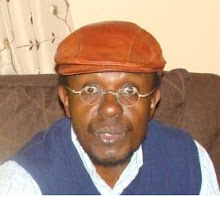In one
of the big stories in The Standard
of May 26, 2020, it is reported that public universities in Kenya are facing a
challenge in administering end of semester exams following the end of online
lectures. Assessment and feedback practices can be challenging even in the best
of times, especially if virtual. It is therefore understandable that
universities are struggling to manage assessment during the current pandemic.
I have
had occasion to reflect on the question of the role of assessment and feedback
in a student-centered learning environment. My conclusion, which some may
(dis)agree with is that, in both theory and practice, there needs to be
alignment between the learning outcomes, teaching and learning activities, as
well as the assessment strategy.
John Biggs
– the famous Australian educational psychologist – proposed[1] the
adoption of a constructivist pedagogical approach where the focus is always on
what the learner is actually doing, placing the learning activities at the heart
of the process. This is easier said than done in time of "inside and online".
While Kenyan universities would in all likelihood have established clear guidelines for teaching, learning and assessment that faculties
and departments are required to implement, the need to have complementary mechanisms
for quality inspection and quality control with regard to assessment and
feedback as central components of the teaching and learning process cannot be
overstated.
In the referenced story, university officials are said to be
exploring ways to come up with secure and cost-effective methods of assessing
students online, which will guarantee quality and check exam malpractice.
I have
previously argued that assessment and feedback has an important role in students’
learning. It acts as an important interface between learning objectives and
outcomes. Judicious use of effective assessment methods and practices has value
and potential to significantly improve learning outcomes. Given that there are
diverse assessment methods, selective application of such methods is of essence
and has a bearing on learning, particularly in the context of virtual teaching
and learning.
In my
experience I found that adapting assessment methods and practices to students’
learning styles and processes holds great promise to improving learning
outcomes. This means that assessments methods and practices must be adapted to the
reality under Covid-19. Since this is new for most of us it goes without saying
that there is need for research on design and use of diverse assessment methods
in all levels of learning domains.
Sharing
experiences on various aspects of assessment design and application across the academe
can go a long way in making the search for effective assessment solutions less
daunting, and certainly less traumatic than the report suggests.
[1] Biggs, J.B., 2011. Teaching for quality learning
at university: What the student does. McGraw-hill education (UK).

No comments:
Post a Comment